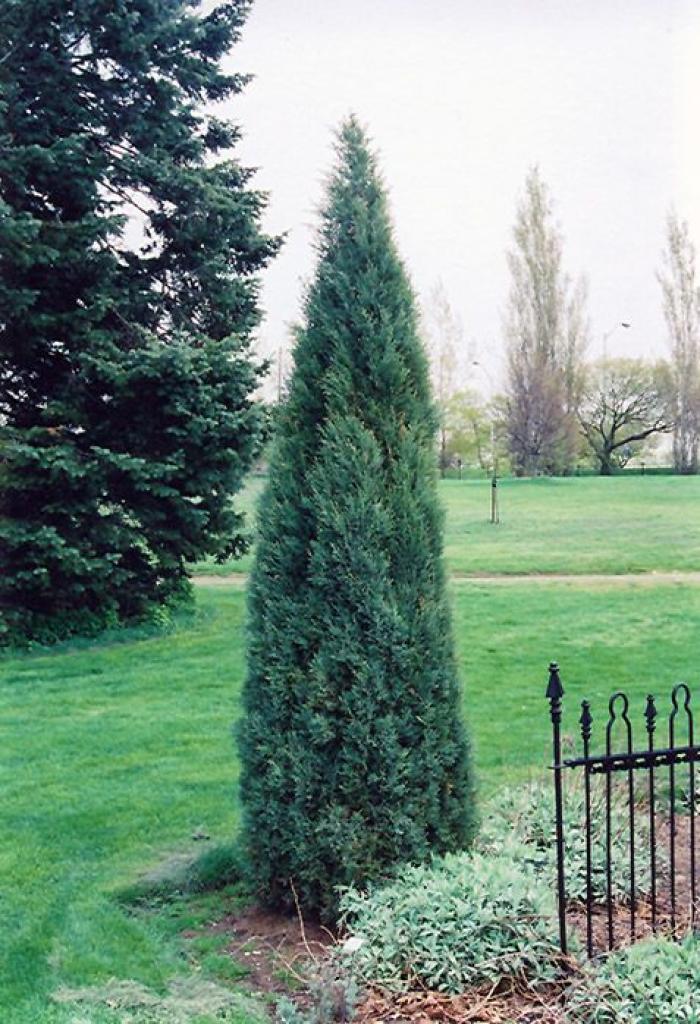Juniperus scopulorum 'Medora'
Medora Juniper

Description
Attractive blue-green foliage on a naturally narrow column that holds its form well without pruning! An excellent vertical accent, useful for landscape framing. This very durable specimen tolerates heat, cold, drought, and seacoast exposure. This is a male clone and does not produce berries. Evergreen and slow growing, reaching 10' tall and 2-3' wide. This very narrow, columnar Juniper is available in natural or spiral form. A dramatic, almost architectural plant that is much like the classic Italian Cypress but far more cold hardy. Line them up into a dense hedge for a windbreak or privacy screen or use the spirals as a formal accent. Use as a vertical accent for naturalistic landscapes of mixed conifers. Easily grown in a wide range of soils, including clay, alkaline and compacted soils; avoid wet, soggy soils. Water deeply, regularly during the first growing season to establish an extensive root system; once established, reduce frequency. Feed with a general purpose fertilizer before new growth begins in spring.
Plant Type
Conifer
Height Range
6-12'
Flower Color
n/a
Flower Season
n/a
Leaf Color
Blue Green
Bark Color
n/a
Fruit Color
n/a
Fruit Season
n/a
Sun
Full
Water
Low
Growth Rate
Slow
Soil Type
Clay
Soil Condition
Average, Well-drained, Dry
Soil pH
Acid, Neutral, Basic
Adverse Factors
n/a
Design Styles
Formal, Mediterranean, Seascape, Spanish
Accenting Features
Specimen, Unusual Foliage
Seasonal Interest
Winter, Spring, Summer, Fall
Location Uses
Background, Shrub Border, Patio, Park, Parking Lot, Raised Planter, Roadside, Swimming Pool, Walls / Fences
Special Uses
Erosion Control, Hedge, Screen, Topiary, Mass Planting
Attracts Wildlife
n/a
Water Saving Tip:
Even during our hottest months we don't need to water daily.
Give your plants a chance to breathe.
Water late at night or in the early morning hours to avoid losses to wind and evaporation.